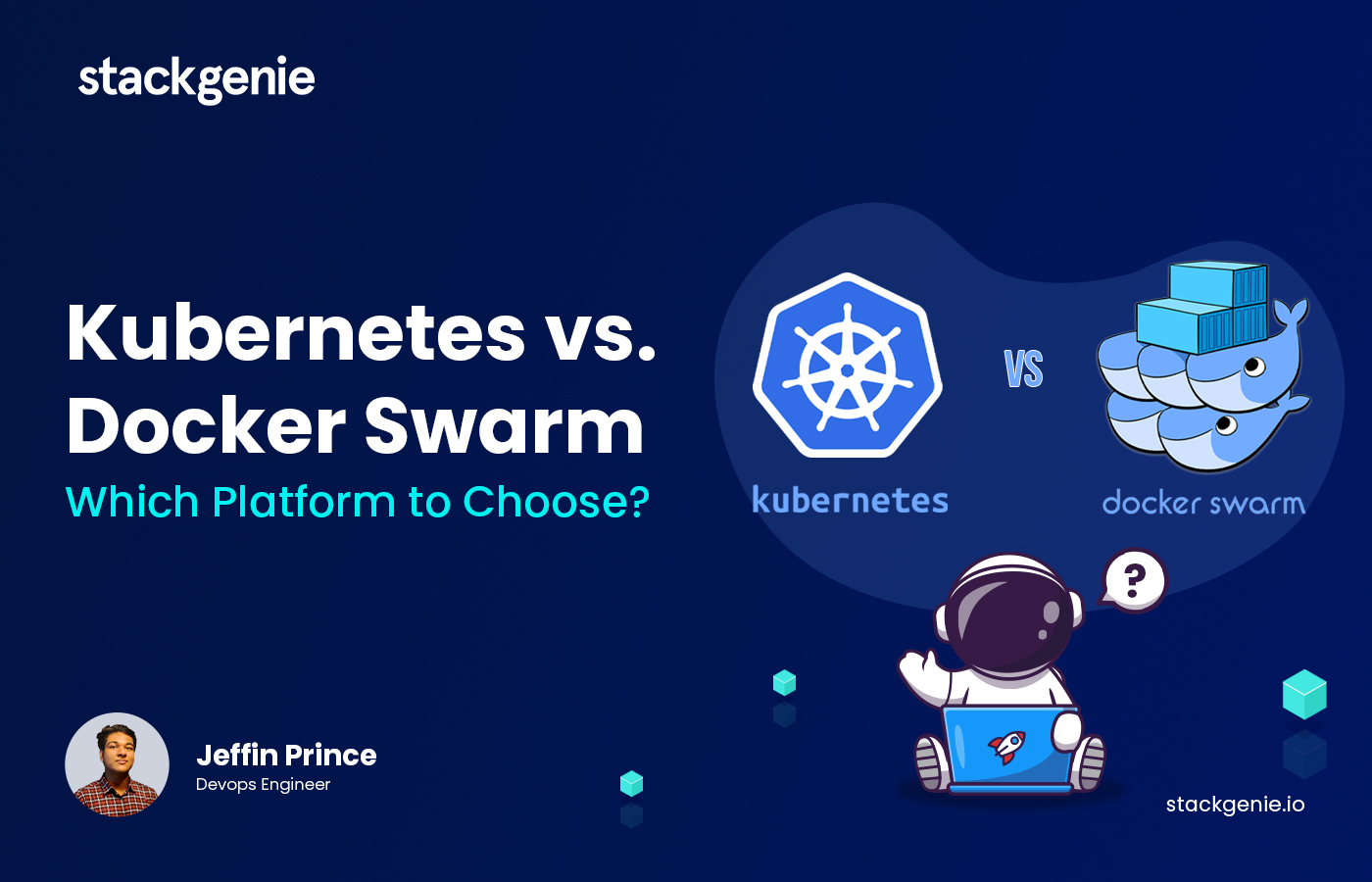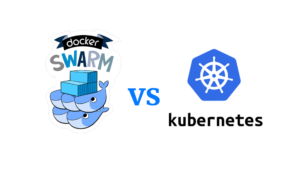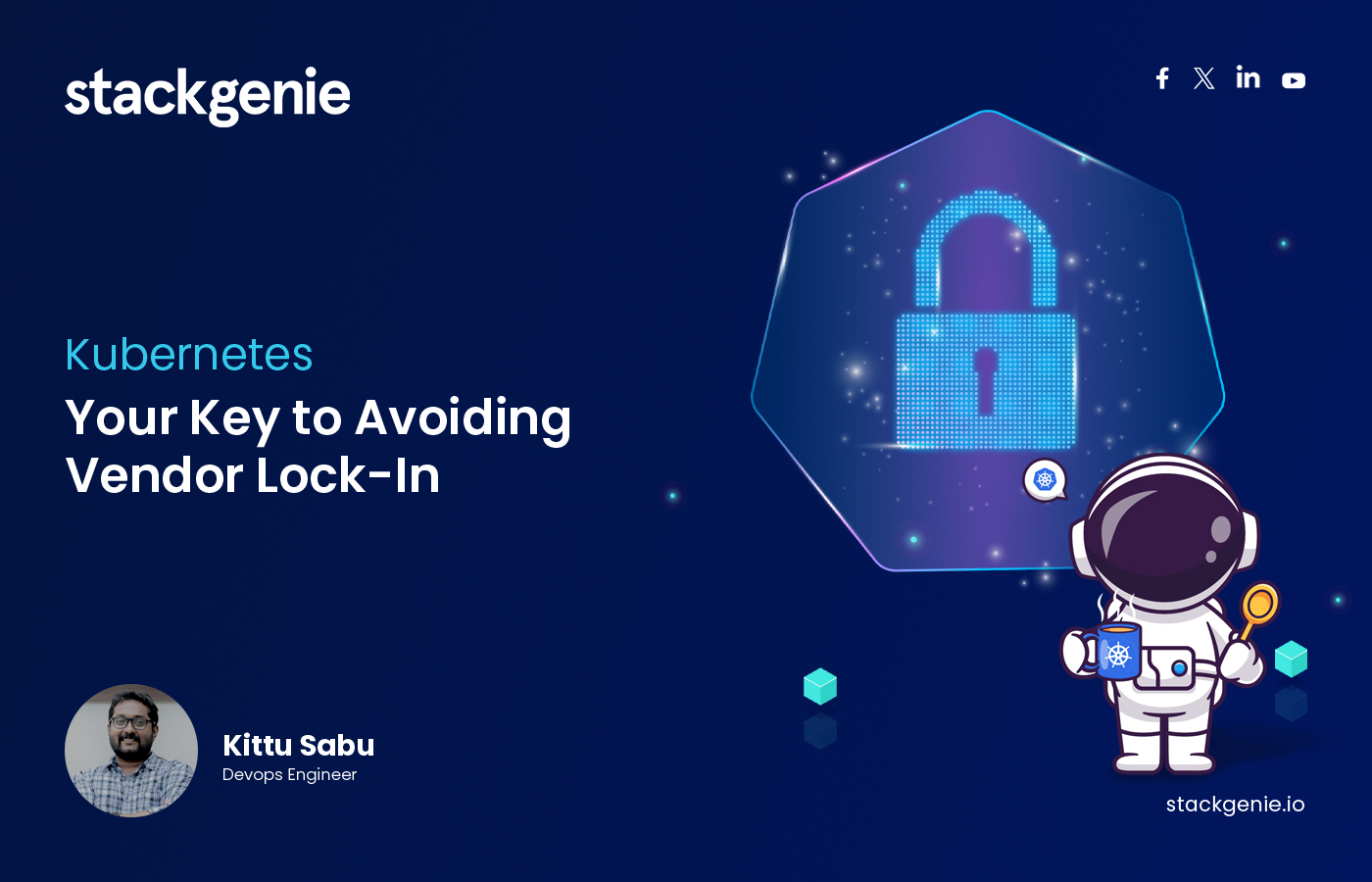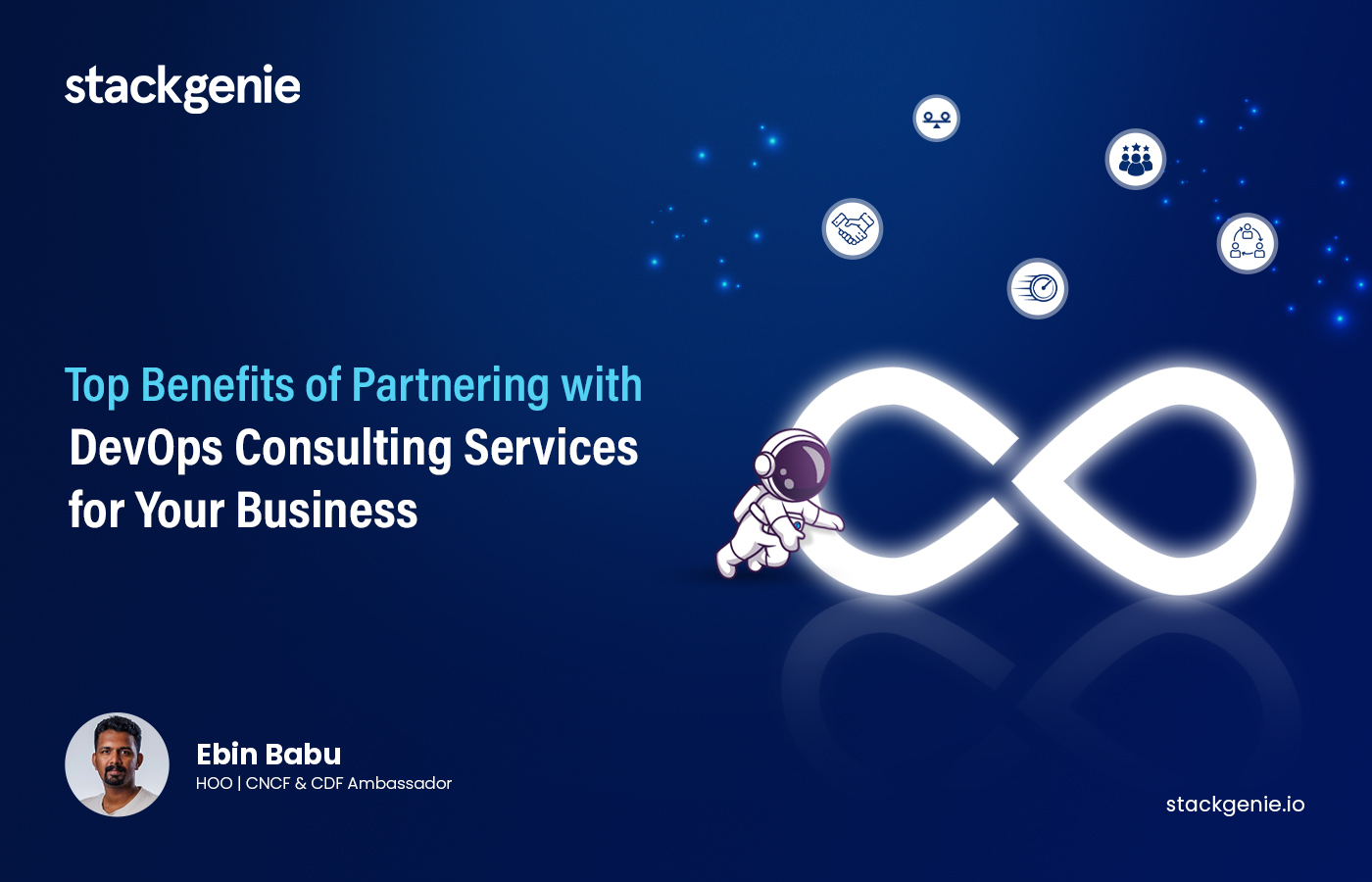Inside this article :
What is Kubernetes?
Kubernetes, or K8s, is an open-source cloud-native tool that simplifies managing complex applications across multiple machines by treating them as a single unit. It handles deployment, scaling, and resource management automatically. Due to this, you can gain the desired state with a powerful API without worrying about underlying hardware specifics.Key Features of Kubernetes include:
- It detects and replaces failed containers to ensure application reliability.
- It automatically scales applications based on demand.
- It manages seamless updates to applications by reducing downtime.
- It efficiently allocates resources across containers to optimize performance.
What is Docker Swarm?
Docker Swarm is an open-source container orchestration platform native to Docker. It transforms multiple Docker instances into a single virtual host. Swarm manages nodes, services, and tasks within a cluster, with nodes acting as individual Docker engines responsible for running services and tasks. It also incorporates load balancing to distribute requests across nodes efficiently.Key Features of Docker Swarm include:
- It provides an easy setup and configuration process for container orchestrations.
- It integrates smoothly with existing Docker tools and workflow.
- It distributes traffic across containers to ensure equal workload distribution.
- It uses a decentralized approach that allows multiple managers to share orchestrational workloads.
Kubernetes vs. Docker Swarm: A Simple Head-to-Head Comparison
Although Kubernetes and Docker Swarm offer containerization capabilities, they are fundamentally unique and have different working patterns.1. Ease of Use and Setup
One significant difference between Kubernetes and Docker Swarm is the ease of use and setup. Kubernetes has a steeper learning curve as it requires more time and skills to understand its complex system. Setting it up requires configuring multiple components, including the control plane, etcd, kubelet, and kube-proxy. Although very complex, Kubernetes offers flexibility and control, making it ideal for large and complex applications. On the other hand, Docker is known for its simplicity. It has a few commands that you can set up with the Swarm cluster to deploy your services. So, Docker becomes an attractive option for teams new to container orchestration or those with a straightforward approach.2. Scalability and Flexibility
When it comes to scalability and flexibility, Kubernetes is a true winner. It is specially designed with scalability in mind. Plus, it excels at managing large clusters with thousands of nodes. It supports various scaling options, including horizontal pod autoscaling based on custom metrics, which makes it ideal for applications with multiple workloads. Docker Swarm is designed to scale applications horizontally to deploy more replicas to service to increase workloads and traffic. A scaling tool, Docker service scale, offered by Docker Swarm, enables users to scale services up and down in response to demand. It is suitable for massive deployment since it can expand over many machines. However, it needs to work on complexities to scale enterprise-level applications.3. Community and Ecosystem
The community and ecosystem surrounding a platform are critical for its long-term viability and success. Kubernetes has a massive and active community with contributions from major tech companies like Google, Red Hat, IBM, and Microsoft. This has led to a rich ecosystem of third-party tools, plugins, and integration for monitoring, logging, security, and CI/CD. While Docker Swarm has a smaller community than Kubernetes, it benefits from having a broader Docker ecosystem. Docker Swarm users can leverage many Docker tools and resources, including Docker Compose, a tool that simplifies the deployment of multi-container applications. Due to its integration with Docker Compose, it becomes easy to manage and deploy complex setups.4. Performance and Efficiency
Kubernetes is designed especially for high-performance and efficient resource utilization. It offers an advanced scheduling algorithm that optimizes the placement of containers based on resource requirements, availability, and policies. Plus, it also supports custom resource definitions and operators that allow highly specialized and optimized workloads. Docker Swarm is seamless for smaller clusters and simpler workloads, making it an attractive option for organizations that prioritize ease of use and quick deployment. Its decentralized architecture allows every node to function as a manager and a worker, contributing to high availability and fault tolerance.5. Security Features
Kubernetes has a detailed security model with features like role-based access control (RBAC), network policies, secret management, and pod security policies. It also supports multi-tenancy and namespace isolation, which is essential for organizations running multiple applications or managing various customers on the same cluster. Yet, Docker Swarm has in-built security features like mutual TLS encryption, role-based access, and security management, making it practical for many use cases. These built-in security measures help to ensure that applications are protected by providing a straightforward and reliable approach to secure containerized environments.6. Networking and Service Discovery
Kubernetes provides a highly configurable and powerful networking model. It supports multiple networking plugins, such as CNI, that allow users to choose the best solution for their environment. It also offers built-in service discovery and load balancing through its services and ingress resources. Plus, Kubernetes supports network policies for fine-grained control over traffic between pods. Docker Swarm’s networking model is simple and practical, offering built-in service discovery and load-balancing. It supports overlay networks that span all nodes in the cluster, which makes it compatible with various applications. Docker’s networking capabilities are specially designed to be easy to use and meet the needs of most users.7. Cost and Resource Management
Kubernetes offers standard resource management features like resource quotas, limits, and priority classes. These features let organizations optimize resource usage. They ensure that the critical application receives the resources it needs while avoiding over-provisioning. As we have discussed above, Kubernetes supports horizontal and vertical pod autoscaling, which helps reduce costs by automatically adjusting resource allocation according to demand. Docker Swarm’s resource management potentials, like resource reservation and constraints, are designed to allocate CPU and memory efficiently across containers. This simply makes it an attractive option for organizations seeking to minimize operational overhead. Also, Swarm allows teams to quickly deploy and maintain clusters without any need for extensive expertise, streamlining operations and reducing costs. You might have understood enough of the differences between Docker Swarm and Kubernetes. Next, we have maintained a summarized table for you to explore some technical intricacies. Read Related: Top Kubernetes Monitoring Tools to Streamline Cluster ManagementKubernetes vs Docker Swarm: The Comparison Table
| Attributes | Kubernetes | Docker Swarm |
|---|---|---|
| Autoscaling | It is available | It is not available |
| Automatic load balancing | It should be setup | It is available |
| Monitoring | Many tools available | Limited tools available |
| Learning Curve | Complex due to many commands and components | Easy to learn |
| Orchestration mechanism | The master node uses scheduler to control container deployments | Working nodes are responsible for the container |
| Managed services | Offered by many providers | Not offered |
| Security | Advanced security features like RBAC and pod security policies. | It is simpler with built-in mutual TLS and secret management. |
| Update Management | Supports rolling updates with rollback options | It only supports rolling updates |
| Third-Party Integrations | Extensive with many integrations and tools available | Limited but integrates well with Docker tools |
When to Choose Kubernetes?
Kubernetes is specially designed to address the needs of applications that require complex orchestration. It is a go-to choice for large-scale, product-grade deployments that need to manage multiple complex services with high availability and difficult networking. It expands when you require a robust ecosystem with a vast array of plugins, community support, and enterprise features. Kubernetes is built to manage stateful applications with robust storage needs for handling ample amount of workload efficiency. Kubernetes is ideal for:- The deployment of large-scale applications across thousands of nodes.
- Environments that require high availability, autoscaling, and self-healing features.
- Projects that benefit from a rich ecosystem of tools and extensive community support.
- Scenarios where advanced orchestration and scheduling capabilities are needed.
When to Choose Docker Swarm?
Docker Swarm is best when simple and fast deployment is a significant undertaking. Many SME projects or development teams are taking initial steps into container orchestration, so Swarm provides a gentle introduction. It is also favorable when you have a handful of services to manage and want to complete them on time without a steep learning curve. It’s used in applications that require fast scaling and where detailed, custom orchestration is not necessary. If your team is familiar with using Docker and prefers a single tool for container management, it is an excellent choice. Docker Swarm is best-suited if:- The speed of deployment is critical.
- The scale of operation is moderate in that it doesn’t have to extend to many thousands of nodes.
- The existing team has experience with Docker, and minimal learning is required.
- Those projects don’t require complex orchestration features.



